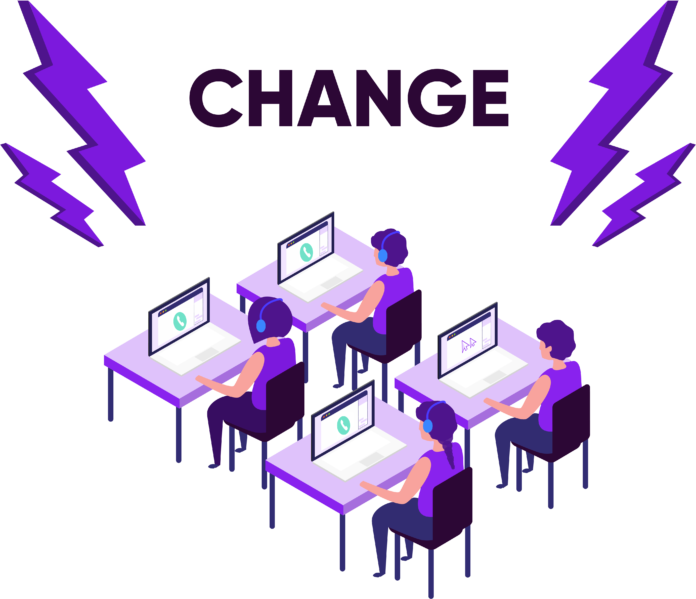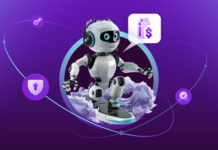This is the first installment of a blog series that examines the trends driving the transformation, reviews how people work in today’s contact center, and explores what you should do now to staff the contact center of tomorrow.
Start Swimming
“You better start swimmin’ or you’ll sink like a stone.” If customer service is part of your job responsibilities, you best heed the warning of folk prophet Bob Dylan in his 1960s anthem about change. Changes in customer expectations, consumer behavior, and technology are driving a seismic shift in the contact center industry. This evolution will transform the traditional roles of agent, supervisor and contact center manager, and create new critical roles needed to delight customers while managing costs.
I Feel the Change a-Comin’
Changes coming to the contact center are in large part caused by the impact of new technologies on consumer behavior. For many years consumers have desired personalized hand-holding when interacting with brands. Customers traditionally become dismayed when pushed to an interactive voice response unit, and just want to figure out as fast as possible how to “zero out” to an agent. However, with the internet putting nearly unlimited information at people’s fingertips, consumers are not only becoming accustomed to trying to solve their own problems rather than asking for help, but many are beginning to prefer it. This, in turn, is driving a desire – even an expectation – that customer service be available 24 hours a day, 7 days a week, 365 days a year.
The rise of this preference for self-service is ironically accompanied by an expectation of “personalized” service. Google has set an expectation that every question can be found among the first page of search results. If a customer has to “ask for help”, it better be highly tailored to the customer’s preferences, and arrive quickly at a resolution to whatever desire or problem is at hand.
As part of the “personalized” and “fast” service expectations, people want to address their needs via whatever is at their fingertips. Increasingly what is at customers’ fingertips are their laptops and their mobile devices running their favorite messaging and social media apps. To get answers to their questions, they’ll want to use these same digital tools that they use to interact with their friends and to keep pace with the world. And if they are going to need interactive help solving a problem, they’ll want the contact center to be already informed of their issue and the hard-spent efforts that they made trying to solve the problem themselves.
Fortunately for both consumers and contact center managers, there are a few quickly maturing technologies that will help customers solve their problems themselves with the speed and personalization expected, 24 x 7 x 365, using their preferred devices and apps.
The fuel feeding these technologies is data. The amount of data in the world is growing at an exponential rate, and the contact center is no exception. By harnessing this explosion of data via Analytics, brands will gain insights into their customers and their operations that will drive a wide variety of tactical and strategic customer care decisions.
In addition to improved decision-making via analytics, Big Data is the fuel for the Artificial Intelligence (AI) revolution that is coming to society at large. AI Management Platforms provide contact centers with the power to use bots to automate routine tasks, as well as to improve how humans address customer needs that are too complex for the bots.
As these changes sweep through the contact center, every role needs to be reshaped to fit the new realities. In addition, new hires with specific domain expertise need to be brought in to manage and leverage the onslaught of data and new technologies. In the rest of this blog series, we dive into each of these roles:
- Agents & Supervisors – Just as a sports team consists of players and coaches working in concert, the contact center’s backbone is comprised of agents and supervisors. As customers are able to address more of their own needs without human assistance and bots become a new player in the field, new types of agents are needed to handle the remaining problems. New communications channels such as messaging and video also change the nature of the agent role. Supervisors need different skills and new techniques to train and manage this new breed of agents.
- The Research Team – In today’s contact center, employees use statistics from ACD reports, quality surveys, and staffing systems to adjust routing rules, suggest agent coaching programs, and adjust staff schedules. Many of these employees worked their way up from jobs as agents or supervisors in the contact center, and may even share the “analytics” responsibility with other managerial responsibilities in the contact center. However, to be successful in the increasingly competitive game of customer delight, a different approach is necessary. Artificial Intelligence will drive self-service, agent training, agent assistance, and analytics, and additional talent is needed to design and manage these new technologies.
- Management – Today’s contact center managers focus primarily on agent performance and customer service level metrics and using those metrics to drive staffing, training, and technology investment decisions. As consumer expectations around service rise and customer experience become a competitive differentiator, the contact center is changing from a cost center to a key strategic asset. Instead of low-cost operations being the top priority, managers’ goals become driving customer satisfaction and improving business outcomes. Since available technologies and customer care requirements are changing rapidly, managers need to be looking at cloud-based solutions that can keep pace with these rapid changes, hire and train the staff who can effectively use these new technologies, and develop processes and metrics around these technologies.
We’ve talked a lot about new technologies, and particularly about AI. While much is predicted about the negative impact of AI on the workers of tomorrow, the truth is that AI will help to transform the lives of agents for the better. To learn why to stay tuned for the next post in this series!
Check out the second installment of this series: The Times They Are a-Changing: Talent in the Contact Center Part 2: Players and Coaches





